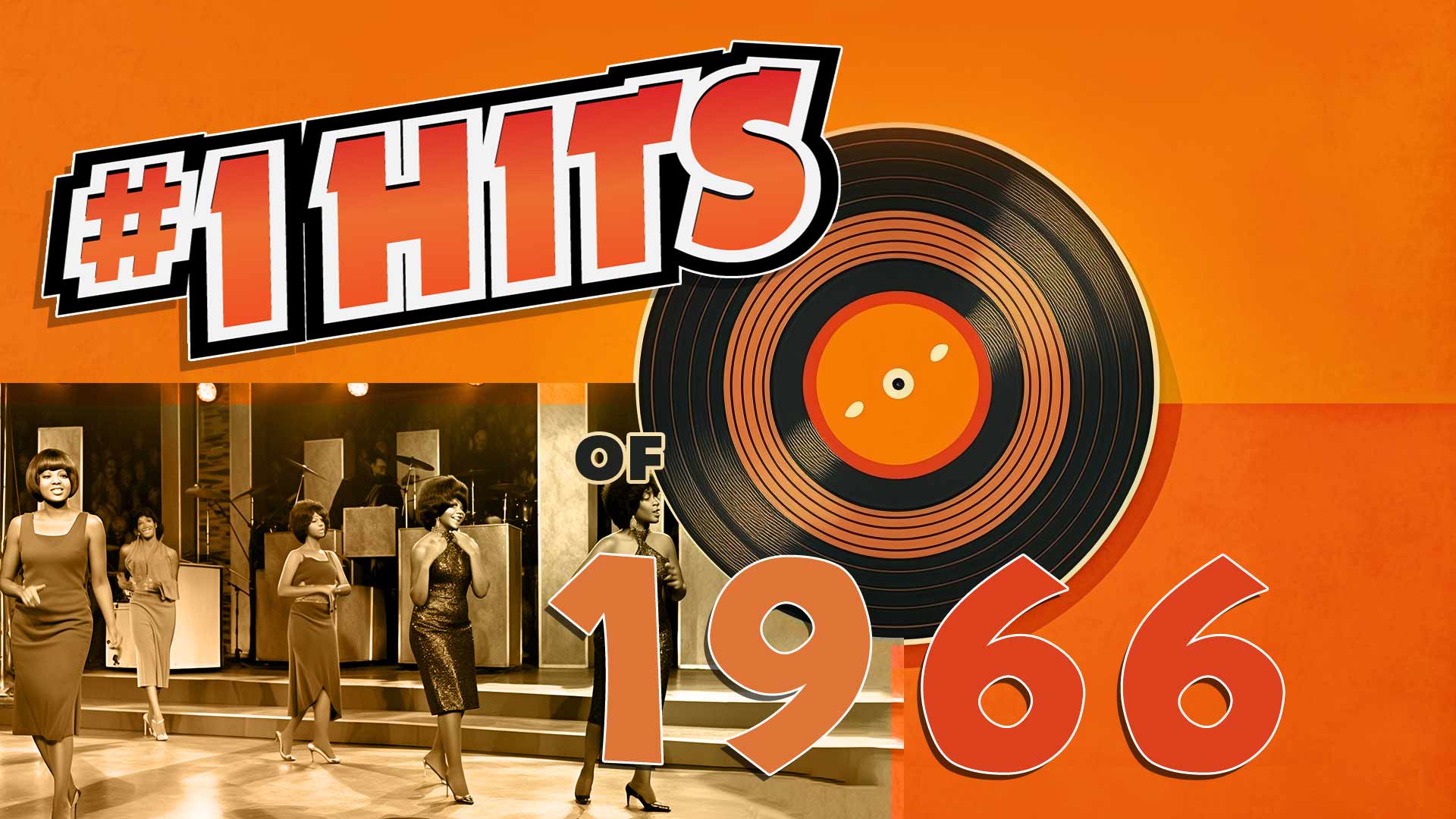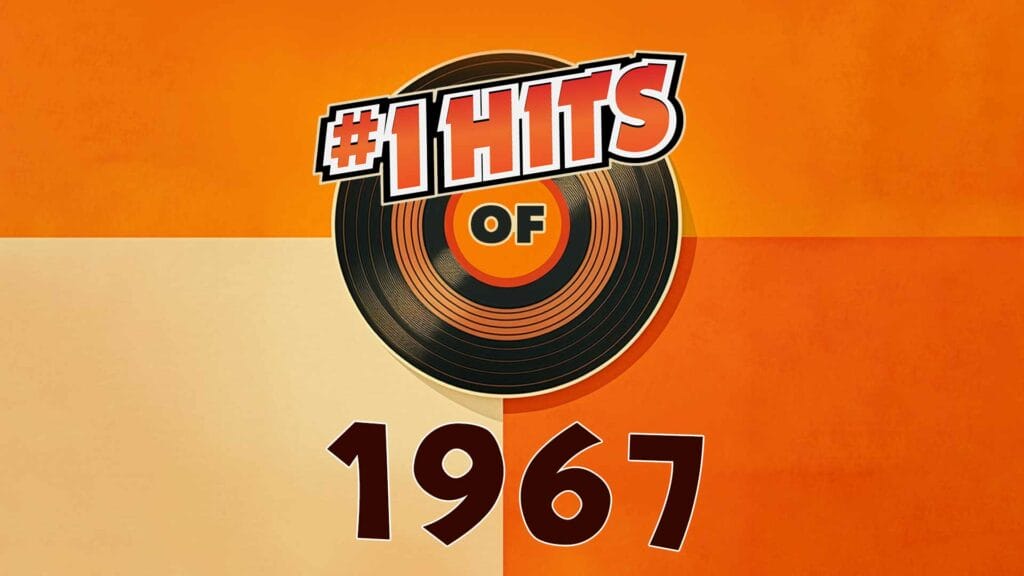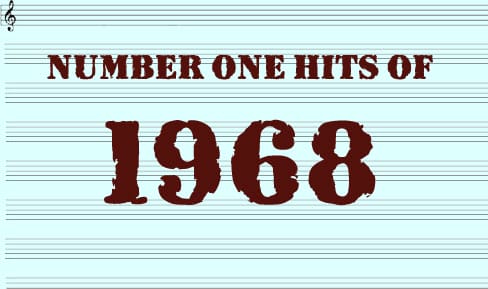 |
||||
|---|---|---|---|---|
The Number One Hits Of 1966 |
||||
| January 1, 1966 – January 7, 1966 Simon & Garfunkel The Sound Of Silence Simon & Garfunkel was an American folk-rock duo, with Paul Simon as the primary songwriter and Art Garfunkel providing distinctive vocal harmonies. The Sound Of Silence was originally released in 1964 but became a hit after a remixed version with electric guitar and drums was released in 1965. |
||||
| January 8, 1966 – February 4, 1966 The Beatles We Can Work It Out The Beatles were pioneers in the use of promotional films, which later evolved into modern music videos. We Can Work It Out is a Lennon-McCartney composition, with John Lennon and Paul McCartney contributing different sections to the song. |
||||
| February 5, 1966 – February 18, 1966 Petula Clark My Love Petula Clark is a British singer and actress who became a popular entertainer during World War II, performing for troops as a child star. Tony Hatch wrote and produced My Love which became Clark’s second US No. 1 single. |
||||
| February 19, 1966 – February 25, 1966 Lou Christie Lightnin’ Strikes Lou Christie is an American singer-songwriter who is known for his falsetto singing voice and his hits in the 1960s. Christie and Twyla Herbert co-wrote Lightnin’ Strikes and was the US singer’s only No. 1 hit. |
||||
| February 26, 1966 – March 4, 1966 Nancy Sinatra These Boots Are Made For Walkin’ Nancy Sinatra, daughter of Frank Sinatra, is an American singer and actress who succeeded in the 1960s with a series of pop hits. These Boots Are Made For Walkin’ was written and produced by Lee Hazlewood and became Sinatra’s signature song. |
||||
| March 5, 1966 – April 8, 1966 Barry Sadler The Ballad Of The Green Berets Barry Sadler was a Staff Sergeant in the US Army who served as a Green Beret combat medic during the Vietnam War. The Ballad Of The Green Berets is a patriotic song that Sadler wrote in honor of the elite special forces unit. |
||||
| April 9, 1966 – April 29, 1966 The Righteous Brothers (You’re My) Soul And Inspiration The Righteous Brothers were known for their emotional, soulful singing style, known as “blue-eyed soul.” Barry Mann and Cynthia Weil wrote (You’re My) Soul And Inspiration, which became the duo’s second No. 1 hit in the US. |
||||
| April 30, 1966 – May 6, 1966 Young Rascals Good Lovin’ The Young Rascals were an American rock band known for their mix of blue-eyed soul, British Invasion, and garage rock influences. Lemme B. Good originally recorded Good Lovin’, but the Young Rascals’ version became a major hit. |
||||
| May 7, 1966 – May 27, 1966 The Mamas & the Papas Monday, Monday The Mamas & the Papas were a folk-rock vocal group known for their rich vocal harmonies and innovative arrangements. Members included John Phillips, Michelle Phillips, Cass Elliot, and Denny Doherty. John Phillips wrote Monday, Monday, and became the band’s only No. 1 hit in the US. |
||||
| May 28, 1966 – June 10, 1966 Percy Sledge When A Man Loves A Woman Percy Sledge was an American soul singer known for his powerful, emotional vocals. When A Man Loves A Woman was Sledge’s debut single and became his most iconic song, later covered by various artists. |
||||
| June 11, 1966 – June 24, 1966 The Rolling Stones Paint It Black The Rolling Stones were one of the first bands to experiment with Eastern sounds, incorporating sitar into their music. Paint It Black is notable for its dark lyrics and Brian Jones’s use of the sitar, which added an exotic touch to the song. |
||||
| June 25, 1966 – July 8, 1966 The Beatles Paperback Writer The Beatles were known for their innovative recording techniques, often pushing the boundaries of what was possible in the studio. Paperback Writer was one of the first Beatles songs to use Artificial Double Tracking (ADT), a technique invented by EMI engineer Ken Townsend. |
||||
| July 9, 1966 – July 15, 1966 Frank Sinatra Strangers In The Night Frank Sinatra was an influential American singer and actor known for his smooth voice and phrasing. Strangers In The Night was written by Bert Kaempfert, Charles Singleton, and Eddie Snyder and became one of Sinatra’s most popular hits. |
||||
| July 16, 1966 – July 29, 1966 Tommy James and the Shondells Hanky Panky Tommy James and the Shondells were an American rock band with Tommy James as the lead singer and songwriter. Jeff Barry and Ellie Greenwich originally wrote Hanky Panky, which became the band’s first No. 1 hit in the US. |
||||
| July 30, 1966 – August 12, 1966 The Troggs Wild Thing The Troggs were a British rock band known for their raw, simplistic style influencing garage and punk rock. Chip Taylor wrote Wild Thing, the band’s biggest hit, known for its distinctive guitar riff. |
||||
| August 13, 1966 – September 2, 1966 The Lovin’ Spoonful Summer in the City The Lovin’ Spoonful was an American rock band known for blending folk, rock, and jug band music. Summer in the City was written by John Sebastian, Mark Sebastian, and Steve Boone and became the band’s biggest hit. |
||||
| September 3, 1966 – September 9, 1966 Donovan Sunshine Superman Donovan is a Scottish singer-songwriter known for his fusion of folk, jazz, and psychedelic rock. Sunshine Superman is considered one of the first psychedelic pop songs and features Led Zeppelin’s Jimmy Page on guitar. |
||||
| September 10, 1966 – September 23, 1966 The Supremes You Can’t Hurry Love The Supremes were a Motown vocal group, with Diana Ross, Mary Wilson, and Florence Ballard as original members. You Can’t Hurry Love was written and produced by the famed Motown team of Holland-Dozier-Holland, and became one of the group’s most enduring hits. |
||||
| September 24, 1966 – October 14, 1966 The Association Cherish The Association was an American sunshine pop band known for their tight vocal harmonies and intricate arrangements. Band member Terry Kirkman wrote Cherish and became one of the band’s most successful and memorable songs. |
||||
| October 15, 1966 – October 28, 1966 Four Tops Reach Out, I’ll Be There The Four Tops were a Motown vocal quartet featuring lead singer Levi Stubbs and members Abdul “Duke” Fakir, Renaldo “Obie” Benson, and Lawrence Payton. Reach Out, I’ll Be There was another hit song from the Holland-Dozier-Holland songwriting team and became one of the Four Tops’ signature songs. |
||||
| October 29, 1966 – November 4, 1966 Question Mark & the Mysterians 96 Tears Question Mark & the Mysterians was an American garage rock band with the lead singer “?” (Rudy Martinez) known for his enigmatic persona. 96 Tears was written by “?” and became a one-hit wonder for the band, known for its distinctive organ riff. |
||||
| November 5, 1966 – November 11, 1966 The Monkees Last Train to Clarksville The Monkees were an American pop-rock band formed for a television show featuring Davy Jones, Micky Dolenz, Peter Tork, and Michael Nesmith. Tommy Boyce and Bobby Hart wrote Last Train to Clarksville, the band’s first No. 1 hit in the US. |
||||
| November 12, 1966 – November 18, 1966 Johnny Rivers Poor Side Of Town Johnny Rivers is an American singer, songwriter, and record producer known for his smooth vocals and soulful interpretations of popular songs. Rivers co-wrote Poor Side Of Town and Lou Adler, showcasing Rivers’ ability to transition from rock ‘n’ roll to a more soulful sound. |
||||
| November 19, 1966 – December 2, 1966 The Supremes You Keep Me Hangin’ On The Supremes’ success helped to break down racial barriers and pave the way for future African American artists. You Keep Me Hangin’ On is another Holland-Dozier-Holland composition and became one of the group’s most dramatic and intense performances. |
||||
| December 3, 1966 – December 9, 1966 The New Vaudeville Band Winchester Cathedral The New Vaudeville Band was a British novelty group known for its 1920s-style music and humorous performances. Geoff Stephens wrote Winchester Cathedral, a surprise hit known for its old-timey sound and distinctive vocal effects. |
||||
| December 10, 1966 – December 30, 1966 The Beach Boys Good Vibrations The Beach Boys were an American rock band known for their innovative vocal harmonies and leader Brian Wilson’s sophisticated songwriting and production techniques. Good Vibrations was a groundbreaking song that took over six months to produce, featuring innovative use of the theremin and advanced studio techniques. |
||||
| December 31, 1966 – February 17, 1967 The Monkees I’m a Believer The Monkees’ popularity grew rapidly, leading them to become one of the biggest-selling acts of the 1960s. I’m a Believer was written by Neil Diamond and became the Monkees’ second No. 1 hit, showcasing their catchy, upbeat sound. |
||||
|
The Biggest Pop Artists of 1966 include: (HPS music data is compiled from charts, including Billboard’s Pop, Rock, Airplay, R&B/Dance, and Singles Charts. The Hot 100 is the primary chart used for this list.) |


